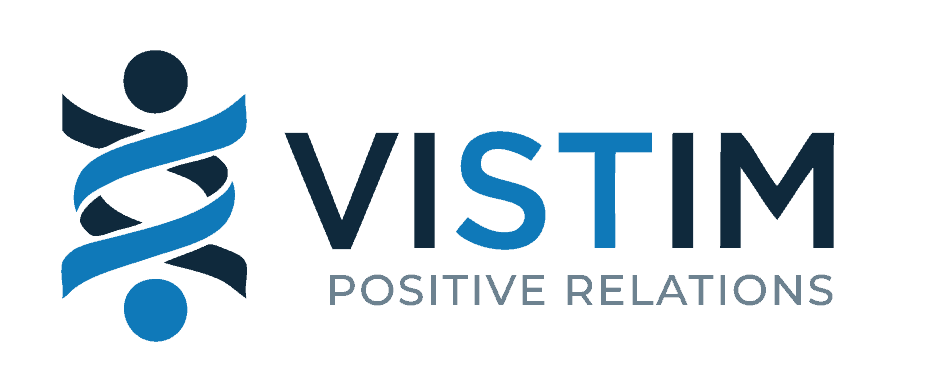The tremendous positive impact of a highly engaged workforce on sustainable performance, productivity, profitability, retention, customer satisfaction, absenteeism and much more is widely recognised and proven. However, few organisations have successfully implemented and maintained an engagement-focused people strategy. This is less due to a lack of initiatives that most companies run with engagement in their mind, but rather because of a failure to truly embed engagement in a coherent strategy and gain buy-in from all essential stakeholders.
During crises, companies particularly miss out on maintaining high engagement levels. The task is surely more tricky during difficult times, but equally more critical than ever. With the uncertainty on how the current crisis will unfold and the recent shift of life priorities for many employees due to the pandemic, the difference between succeeding and failing to build and maintain high engagement will be more impactful than ever – failing could be fatal!
Improving engagement comes with a shift in company culture and hence requires a conscious effort and a plan – here are, based on our experience, the 7 steps to high engagement:
1. Make engagement a strategic priority
Building and maintaining high engagement levels is a continuous and conscience effort. The number one reason many organisations struggle to maintain engagement is that their people strategy is designed to support the company strategy as opposed to being fully integrated in the latter. When times get tough, support activities are dropped – performance and behavioural competencies management are skipped, development and career perspectives are put on hold, and communication lacks clarity on direction and goals. Precisely when people engagement is most needed to face challenges, we stop doing what is right.
Certainly, many HR activities support the company strategy – recruitment for example supports the strategy by hiring the right talent in time. However, if employer reputation is poor, there is only so much recruiters can do, let alone managers retain new hires.
Engagement has its place at the centre of the company strategy. To stick with the example of recruitment; high engagement leads to a strong employer reputation, higher retention, and hence less need for recruitment and more importantly less complex recruitment. When people stay longer, the need to backfill critical expertise and experience (the scarce talent) is reduced and the capability to recruit and grow more junior profiles increased.
Making engagement a strategic priority includes drawing your board’s attention to the subject and tabling engagement at least once a year on the board’s agenda. It also means rethinking well-established habits such as using financial KPIs as objectives and as main reward drivers for senior executives and employees. Financial KPIs are important to monitor, but nobody gets out of bed in the morning feeling excited about chasing a financial target. Reaching financial goals is not achieved by setting them as objectives, but by translating them into projects and activities that contribute towards them. Those projects and activities are what people get out of bed for.
Engagement as a strategic priority drives a redefinition of people managers’ roles. When difficult and radical decisions seem to impose themselves, considering the long-term consequences of excessive damage to engagement helps to identify the most sustainable course of action. Quite some airlines may wish they had given their luggage carriers access to state subsidised short-working schemes instead of firing them, considering the thousands of flights they recently had to cancel because of staff shortages.
Including engagement in the core of the company strategy evolves the way organisations are led for better decisions and increased sustainable performance.
2. Understand your current engagement level
Improving engagement is not achieved by random actions, even if they have the potential of a positive impact. If people perceive that reward and career progression decisions are unfair, a Friday afternoon drink has no impact on engagement. There is a hierarchy in what impacts engagement not un-similar to the logic of Maslow’s hierarchy of needs.
To develop an action plan with the most effective impact, it is important first to understand the level of engagement of your people and more specifically the topics that may undermine their engagement.
This can be achieved with an engagement survey. Such surveys analyse multiple aspects that contribute to an environment that enables people to engage themselves. The results give insights into topics that have room for improvement throughout the organisation or in parts of the company and whether there is consensus or differing perception on certain practices. By analysing the data thoroughly, you can identify for example the one or two areas where gender equality is not achieved whilst the overall score may indicate it is.
Running an engagement survey on an annual basis and deriving an action plan based on a thorough analysis of its results is the best way to make good progress.
3. Align your people policies to engagement
When reviewing people policies and practices for our clients, we often see significant inconsistencies between the messages they convey or between their purpose and their actual effects.
Desired values and behavioural competencies are promoted but performance management and reward decisions focus only on delivery results. When isolated short-term results are the only thing that matter, collaboration, innovation, creativity and anything with long-term impact are undermined.
Performance management is mostly designed to rate past performance and to serve reward and career decision-making. That is not the purpose of performance management! The name is the game – performance management! We cannot manage yesterday’s performance, only tomorrow’s. Future performance is improved through clarity and relevance of what and how needs to be achieved and by developing the skills and competencies required to do so. Past performance merely serves as raising awareness and a learning opportunity. A rating does not help me improve, but qualitative and constructive feedback makes all the difference.
Another engagement killer are restrictions and rules that do not make sense or give the impression that people are considered immature and irresponsible. How can we expect someone to be engaged if that is how we make them feel?
Coherence of all people policies is an important contributor to improving engagement. They should not be designed to make the manager’s life easier, but to be purposeful and of common sense.
Implementing and applying such policies is a challenge for people managers who need help to do so – that is what the next step is all about.
4. Develop your leadership capability
People join companies and leave managers is almost a universal truth. The most important activities affecting engagement are people management activities.
At the same time, nobody has had any people management experience when first being promoted in such a role and, very frequently, the support to succeed in that role is far from sufficient.
In addition, most organisations expect from their people managers technical expertise and knowledge at all times on progress on all aspects of what their teams are working on. So, not only do we not develop and support them sufficiently to do their job, but we also deprive them of the time necessary to do so.
The real value people managers at all levels can produce is ensuring their engaged teams’ collective performance exceeds by far their own capability. Changing what we expect from them as well as developing, supporting and coaching them is essential to enable a highly engaged workforce.
Defining the way we want people to be managed and then developing the leadership capability is the most important investment a company can make. The impact on the long term is huge, but so is the effort required – a one-off two-day leadership development programme will not do. Some required activities are action learning groups, coaching, support from HR Business Partners and regular refreshers.
5. Define your engagement governance
As for any important – of strategic importance – aspect of the company life, real implementation and follow-up requires its well-defined governance – what are the annual process steps, who are the stakeholders, how are decisions taken and who defines content and assures delivery of the communication plan?
Annual process steps include the survey, the analyses of its results, the action plan derived therefrom and the way your people and their representatives are involved in the discussions and the action plan. They also include how you involve your board – if you are the CEO and believe in the value of building a highly engaged workforce, then you do want your board to share your conviction and to support you in making it happen by embracing your strategy as opposed to imposing conflicting priorities upon you.
Your stakeholders are your board, executive team, people managers, employees and their representatives and your HR function. Each of their roles have to be defined in terms of accountabilities, consultation, information, decision-making and involvement in the implementation on each process step.
Who is taking decisions and based on which consultation process has to be clearly defined.
Finally, as a topic that affects everyone in the organisation, communication is paramount. You have to ensure that your people understand what you are doing and why, as well as you have to ensure that you understand your people’s expectations. Engagement requires the involvement and alignment of everyone.
The task requires a conscious effort – adequate time has to be allocated and governance followed for success.
6. Recognise engagement
Many of us need and all of us welcome recognition.
If high engagement is what we want to see from our people, then it is obvious that we should also recognise high engagement when we see it, both financially and through other means.
Financial reward does not generate engagement, but if our reward policies and practice recognise differing behaviours, then reward can kill engagement very effectively. It is a matter of alignment of people policies as described under point 3 above. Reviewing reward policies is an essential step towards high engagement.
Recognition goes far beyond financial reward and ranges from simple “Thank you”, positive feedback, acknowledgement of N+2 and upper to career and development support and opportunities.
Receiving recognition confirms that we are on the right track and energises us to continue and to further improve. Lack of recognition drains our energy over time and casts doubt on whether what we are doing is what is expected.
Making recognition a perceivable aspect of your company culture significantly impacts people engagement.
7. Restart at Step 1
High engagement requires constant maintenance and its positive impact on sustainable company performance more than justifies the effort.
Whilst reaching high engagement may take years and maintaining it requires constant focus, the benefits are perceivable after only months and increasing over time, and the efforts are becoming less difficult as they turn into habits.
As the factors that enable people engagement may change over time, we have to reassess and adjust our habits by running through the 7 steps on a regular basis.
Conclusion
Let us consider two comparable companies, Company A with a highly engaged workforce and Company B with a neutral workforce:
- After one year A will have performed stronger than B and A will be in a position to set higher objectives than B for the following year
- The highly engaged workforce of A will over time improve A’s capability: IT systems will be better designed, knowledge and know-how is increasing, network reach and partnerships gain in quality, reputation is improved, as is agility, collaboration, innovation, …
- A will gain access to opportunities, and will have the ability to pursue them, which B will neither get access to nor be able to take up
In short, the benefits from high engagement are exponential over time!
As for anything with high rewards, except gambling, some effort and investment, mainly in terms of time, is required and I hope the 7 steps above will help you unlock the benefits of high engagement.
Do not gamble for engagement – it is never a result of coincidence!
Gérard Sinnes
CEO of VISTIM



